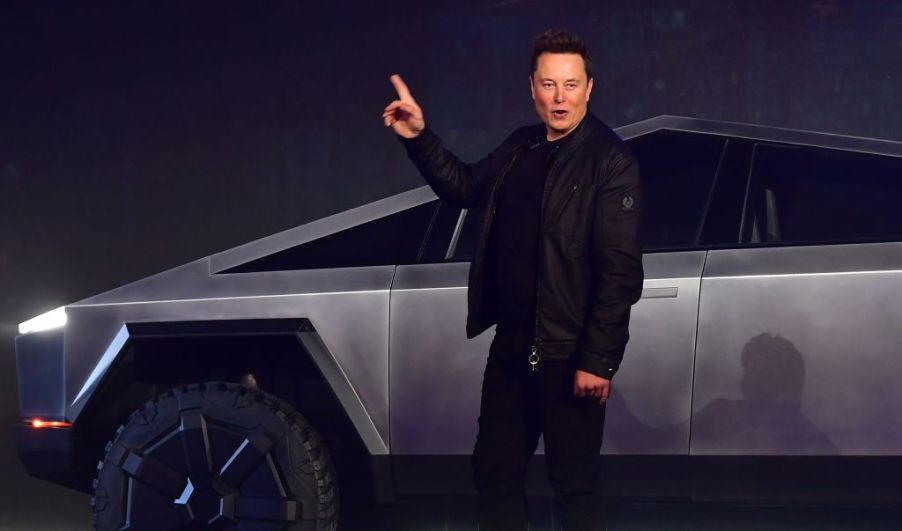
Will The Cybertruck Bring Digital Mirrors to The U.S.?
Bold departures from tradition define the Cybertruck. The electric pickup on offer from Tesla is challenging one of the most ubiquitous safety features installed on all modern vehicles. Consequently, Tesla equiped the Cybertruck with digital mirrors. The external mirrors conspicuously missing from the Cybertruck might be among the most controversial design features of automakers.
The conspicuous detail missing from the Tesla cCybertruck
Tesla’s Cybertruck has shocked consumers with its unsettling appearance since it was first debuted in 2019. Elon Musk designed the electric pickup truck with otherworldly sharp angles. Moreover, many remark that the Cybertruck looks like futuristic concept art come to life. In many ways, that’s exactly what the Cybertruck is.
Many features of the Cybertruck stray away from traditional design paradigms. It’s not just the strange angles that set it apart from pickup trucks in the past. For instance, the steering wheel looks like something from an extraterrestrial spacecraft. However, there is one essential detail missing from the Cybertruck’s exterior.
Side view mirrors are a critical part of vehicle safety equipment. Even the earliest cars featured reflective surfaces that allow drivers to get a better idea of their surroundings. The Cybertruck features no such external mirrors.
Cybertruck’s innovation for an antiquated feature

RELATED: The Tesla Cybertruck Outperforms the Ram 1500 TRX
Some would argue that side-view mirrors are an outdated holdover. Drivers cling to them out of a sense of tradition and comfort. On the other hand, using cameras makes much more practical sense. For example, digital mirrors extend the range of the driver’s view and eliminate blind spots.
The mounting of cameras behind the rear tires on either side of the Cybertruck gives drivers an unprecedented view of what’s behind their vehicle. Drivers will no longer need to adjust mirror position to increase visibility. Cameras give drivers a better view than a mounted mirror ever could. That doesn’t mean drivers will be comfortable departing from the familiarity of using mirrors.
Simply put, watching video feedback doesn’t feel the same as looking directly at a reflective surface. Both actions give the driver the same information. One instinctively feels more direct than the other. That minor adjustment in psychology makes digital mirrors challenging to introduce to the automotive Market.
Digital mirrors may be safer but is the American Market ready?

RELATED: Want A Cybertruck? There Are 532,048 Ahead Of You
It’s notoriously tricky to introduce a technological alternative to two widely accepted solutions. Firstly, side view mirrors and rearview mirrors have been an integral feature of vehicle design since the first motorized car hit the streets. Secondly, checking a rearview mirror was the first rule of the road many young drivers drilled into their heads. For some, their first memory as official drivers is this critical moment in the u.s. driving test.
Advanced safety features such as Collision and pedestrian sensors and autopilot modes, reduce the need for fixed reflective surfaces. Therefore, cars of the future will not require a rearview or side-view mirror. Most importantly, how quickly will consumers and lawmakers adapt to this technological innovation?
In conclusion, it’s unclear how local and federal laws will affect the US release of the Cybertruck. Currently, most municipalities require mirrors as part of their vehicle safety standards. Above all, Tesla has made no public statement regarding the Cybertruck’s digital mirror system’s legality.


